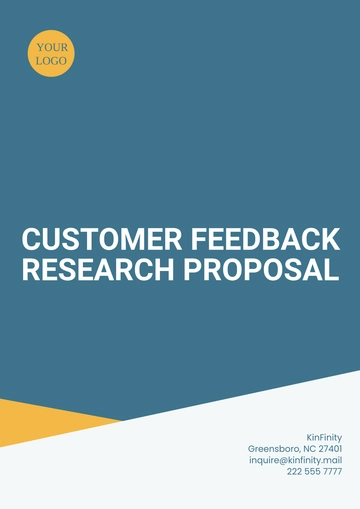Free Climate Change Renewable Energy Proposal

I. Executive Summary
This proposal outlines a comprehensive plan to promote and implement renewable energy solutions, ensuring economic viability and environmental responsibility. [Your Company Name] is committed to leading efforts in reducing greenhouse gas emissions by harnessing sustainable energy sources.
Purpose of Proposal
To accelerate the transition to renewable energy and mitigate climate change impacts. Includes solar, wind, and hydropower energy adoption in urban and rural regions. Our goal is to achieve a [50%] reduction in reliance on non-renewable energy by [2060] and create scalable renewable energy models.
II. Solar Energy Initiatives
Solar energy is a cornerstone of renewable energy, offering a versatile and scalable solution to energy needs. [Your Company Name] aims to expand solar infrastructure in both residential and industrial applications, driving down costs and increasing adoption rates.
Large-Scale Solar Farms: Develop solar farms to provide clean electricity for urban centers and rural communities.
Residential Solar Programs: Incentivize households to install solar panels through subsidies and tax breaks.
Solar Energy Storage: Invest in advanced battery systems to store solar energy for use during non-sunny periods.
Educational Campaigns: Educate the public about the benefits of solar energy through workshops and media outreach.
Partnerships: Collaborate with private and public sectors to fund and implement solar projects.
III. Wind Energy Development
Wind energy provides a highly efficient and sustainable solution for energy generation in regions with high wind potential. This section focuses on the strategic implementation of wind turbines and related infrastructure.
Wind Farm Locations: Identify and prioritize regions with optimal wind conditions for wind farm construction.
Turbine Technology Upgrades: Use advanced turbine technology to maximize energy output and reduce maintenance costs.
Offshore Wind Projects: Explore offshore wind energy as a promising solution for coastal areas.
Grid Integration: Invest in technologies to integrate wind energy into the existing energy grid seamlessly.
Policy Advocacy: Advocate for government policies that support wind energy development and reduce barriers to entry.
IV. Renewable Energy Impact Metrics
Tracking impact metrics is crucial to measure progress and identify areas for improvement in renewable energy implementation. Progress is steady, particularly in solar energy adoption. Wind energy shows potential for accelerated growth with targeted investments. A focus on emission reductions will require bolstered efforts across all renewable sectors.
Metric | 2025 Target | Current Level | Progress (%) |
|---|---|---|---|
Solar Energy Adoption (MW) | 10,000 MW | 6,500 MW | 65% |
Wind Energy Contribution (%) | 30% | 18% | 60% |
Reduction in Carbon Emissions | 50% | 25% | 50% |
Metrics Progress
V. Hydropower and Water Management
Hydropower remains a vital element of the renewable energy mix due to its reliability and capacity to generate large amounts of electricity. [Your Company Name] will ensure hydropower development is sustainable and minimizes ecological disruption.
Sustainable Hydropower Projects: Launch hydropower projects that incorporate fish-friendly turbine designs and minimal habitat disruption.
Water Conservation Initiatives: Partner with local communities to develop sustainable water usage models alongside hydropower projects.
Small-Scale Hydro Plants: Encourage small hydro plants for local energy needs in remote areas.
Policy Frameworks: Collaborate with governments to establish clear guidelines for sustainable hydropower.
Monitoring and Evaluation: Implement robust monitoring systems to assess environmental impacts and energy output.
VI. Renewable Energy Investment Plan
A well-structured investment plan ensures resource allocation aligns with renewable energy goals. The investment gaps highlight the need for increased funding and stakeholder involvement. Solar energy requires significant capital to reach its full potential, while wind energy shows promising progress with moderate funding increases.
Energy Source | Investment Needed | Current Investment |
|---|---|---|
Solar Energy | $1,500,000 | $9,000,0000 |
Wind Energy | $1,200,000 | $8,000,000 |
Hydropower | $8,000,000 | $15,000,000 |
VII. Energy Accessibility and Equity
Ensuring equitable access to renewable energy is critical for driving global sustainability. [Your Company Name] will focus on addressing disparities in energy access, particularly in underserved regions.
Off-Grid Solutions: Implement solar and wind solutions for areas not connected to national grids.
Affordable Pricing Models: Design pricing structures that make renewable energy accessible to low-income households.
Community Ownership Models: Empower communities to own and manage renewable energy projects.
Training and Employment: Provide training programs to create local employment opportunities in the renewable energy sector.
Partnerships with NGOs: Collaborate with NGOs to identify and address barriers to energy accessibility.
VIII. Projected Renewable Energy Output
Estimating renewable energy output is essential for planning and meeting energy demands. Solar energy shows the highest potential for growth, while wind energy remains a close second. Hydropower growth is steady but may require additional strategies to achieve its full potential.
Energy Source | Current Output | Projected Output |
|---|---|---|
Solar Energy | 6,500 MW | 15,000 MW |
Wind Energy | 4,800 MW | 10,000 MW |
Hydropower | 5,000 MW | 8,000 MW |
IX. Policy Advocacy and Global Partnerships
Strong policy frameworks and partnerships are vital for scaling renewable energy adoption. [Your Company Name] will actively engage in policy development and foster global collaborations.
Legislative Support: Advocate for subsidies and incentives for renewable energy projects.
International Agreements: Participate in global forums to align renewable energy goals.
Corporate Engagement: Partner with businesses to integrate renewable energy into operations.
Community Advocacy: Mobilize local support for policy initiatives that encourage renewable energy.
X. Conclusion
[Your Company Name] will continue to drive renewable energy efforts through targeted investments, innovative projects, and global collaborations. Regular assessments and transparent reporting will ensure accountability and adaptability. By focusing on accessibility, equity, and innovation, the organization will lead the transition to a sustainable energy future.
- 100% Customizable, free editor
- Access 1 Million+ Templates, photo’s & graphics
- Download or share as a template
- Click and replace photos, graphics, text, backgrounds
- Resize, crop, AI write & more
- Access advanced editor
Drive energy transformation with the Climate Change Renewable Energy Proposal Template from Template.net. Fully editable and customizable, this template is ideal for presenting plans and solutions focused on renewable energy projects. Update it seamlessly in our AI Editor Tool to align with your objectives. Its professional design guarantees clarity and persuasiveness in your proposal.
You may also like
- Business Proposal
- Research Proposal
- Proposal Request
- Project Proposal
- Grant Proposal
- Photography Proposal
- Job Proposal
- Budget Proposal
- Marketing Proposal
- Branding Proposal
- Advertising Proposal
- Sales Proposal
- Startup Proposal
- Event Proposal
- Creative Proposal
- Restaurant Proposal
- Blank Proposal
- One Page Proposal
- Proposal Report
- IT Proposal
- Non Profit Proposal
- Training Proposal
- Construction Proposal
- School Proposal
- Cleaning Proposal
- Contract Proposal
- HR Proposal
- Travel Agency Proposal
- Small Business Proposal
- Investment Proposal
- Bid Proposal
- Retail Business Proposal
- Sponsorship Proposal
- Academic Proposal
- Partnership Proposal
- Work Proposal
- Agency Proposal
- University Proposal
- Accounting Proposal
- Real Estate Proposal
- Hotel Proposal
- Product Proposal
- Advertising Agency Proposal
- Development Proposal
- Loan Proposal
- Website Proposal
- Nursing Home Proposal
- Financial Proposal
- Salon Proposal
- Freelancer Proposal
- Funding Proposal
- Work from Home Proposal
- Company Proposal
- Consulting Proposal
- Educational Proposal
- Construction Bid Proposal
- Interior Design Proposal
- New Product Proposal
- Sports Proposal
- Corporate Proposal
- Food Proposal
- Property Proposal
- Maintenance Proposal
- Purchase Proposal
- Rental Proposal
- Recruitment Proposal
- Social Media Proposal
- Travel Proposal
- Trip Proposal
- Software Proposal
- Conference Proposal
- Graphic Design Proposal
- Law Firm Proposal
- Medical Proposal
- Music Proposal
- Pricing Proposal
- SEO Proposal
- Strategy Proposal
- Technical Proposal
- Coaching Proposal
- Ecommerce Proposal
- Fundraising Proposal
- Landscaping Proposal
- Charity Proposal
- Contractor Proposal
- Exhibition Proposal
- Art Proposal
- Mobile Proposal
- Equipment Proposal
- Student Proposal
- Engineering Proposal
- Business Proposal





























